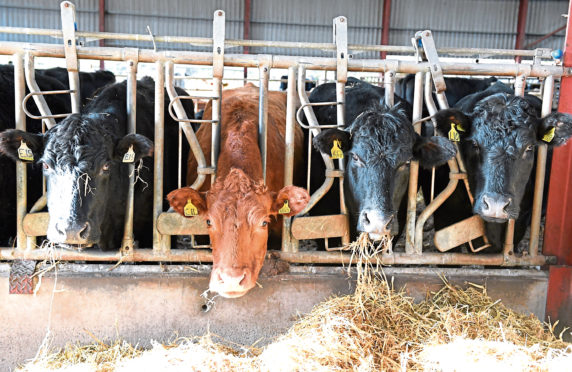Scottish Tenant Farmers’ Association chairman Christopher Nicholson discusses the need for more homegrown protein
With increasing amounts of distillery draff and pot ale syrup now being used to feed anaerobic digesters, Scotland’s livestock sector is deprived of a traditional source of homegrown protein and has become more reliant on imported soya.
Over the last seven years, the amount of draff and pot ale syrup going to anaerobic digesters has approximately doubled to 280,000 tonnes dry matter annually. It’s no wonder we have to look overseas for our protein needs.
It’s not just Scotland’s land-based livestock that is challenged by protein supply, but also farmed salmon, which while making a valuable contribution to Scotland’s growing food and drink sector, is still reliant on imported fishmeal though efforts are under way to find sustainable alternatives.
Those iconic images of Scottish salmon, cattle or sheep in their wild environments are not enhanced by scrutiny of the sources of protein used in our animal feeds – the environmental consequences of imported soya and fishmeal are well documented, both causing harm to ecosystems abroad.
Not only could the Scottish food and drink brand be at risk from the over reliance of the sector on imported protein from unsustainable sources, but also our carbon footprint is likely to increase through protein imports, and in light of the Covid-19 experience of disruption to food supply chains, our own food security may be threatened.
These protein challenges are not unique to Scotland, and are recognised in a recent report from Zero Waste Scotland. The report argues sustainable agriculture and food supply systems are key to managing climate change while feeding an increasing world population, and a pre-requisite is a sufficient and sustainable supply of protein.
Domestic protein strategies from a number of countries are looked into, and the report could provide a blueprint for a Scottish protein plan.
There are a number of common features in the different national strategies analysed in the report.
They were all launched in the last decade; they have common aims to reduce dependence on imported proteins for the livestock industry and minimise the environmental footprint of the food supply chain; and they seek to increase domestic protein production by subsidising the growing of domestic protein crops.
My own thoughts of growing protein crops in Scotland are still tarnished by schoolboy memories of harvesting flat crops of peas in the wet summer of 1985, and later finding myself back on a combine for the following autumn half-term break to salvage field beans in early November – both miserable experiences never to be repeated.
However, after a break of 30 years, I’ve started growing beans again. They are Scandinavian short growing season varieties, which for the last four years have been harvested by early September even when not sown until late April.
Though not perfect, they are an easy-to-manage and low-risk crop to grow in our climate, and show that, with a bit more effort from the plant breeders and a new Scottish protein strategy, protein crops might yet become a common sight in Scotland.
